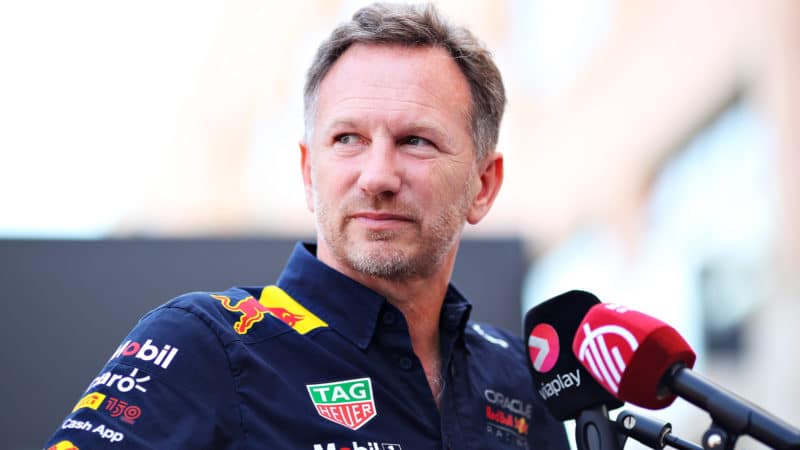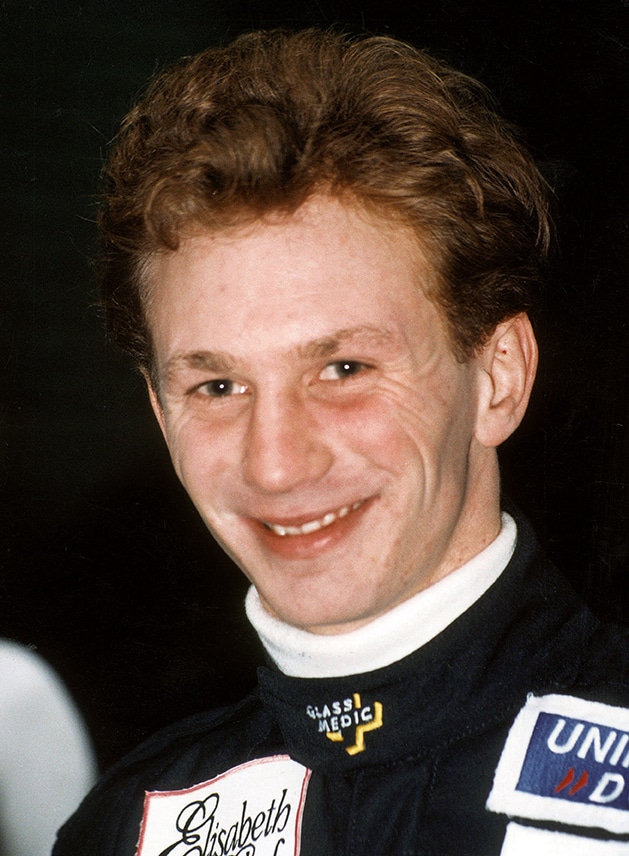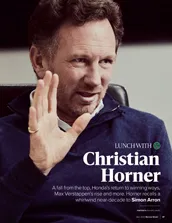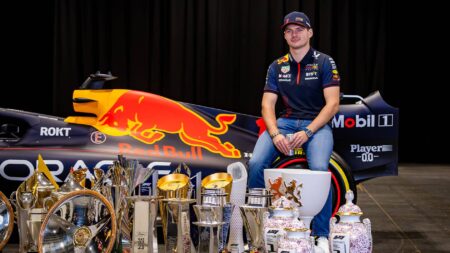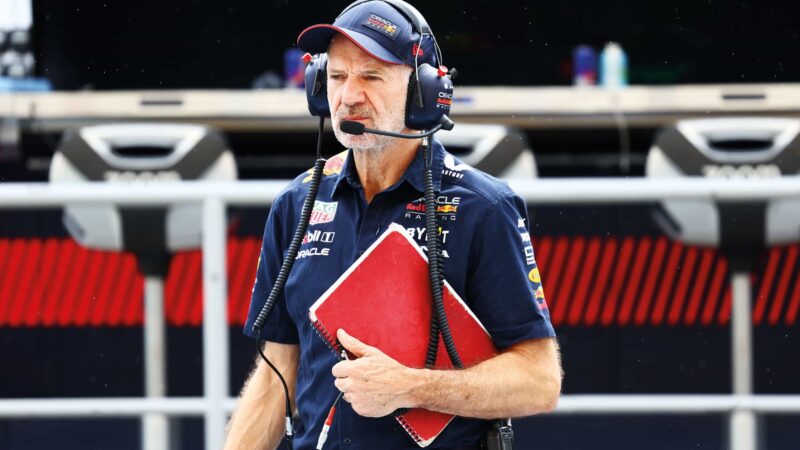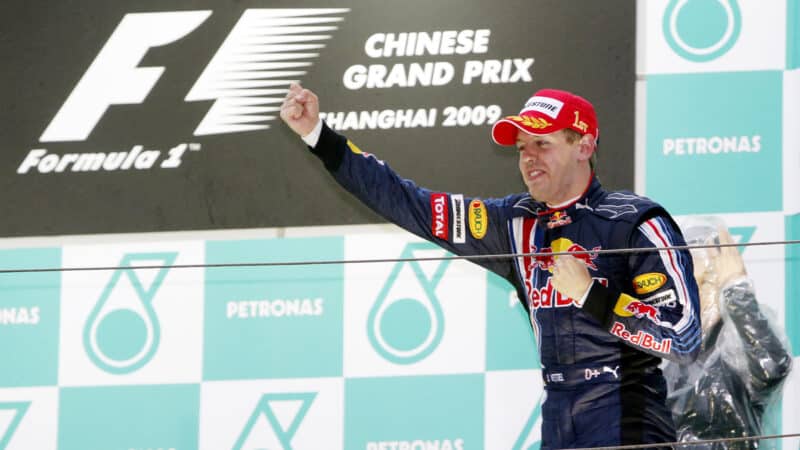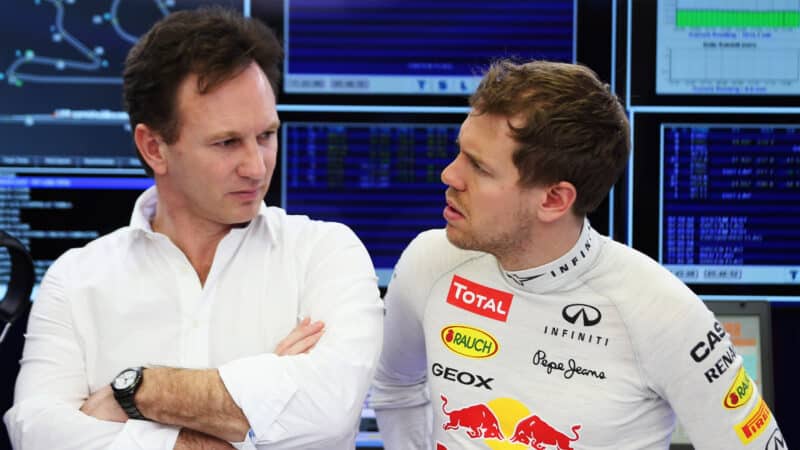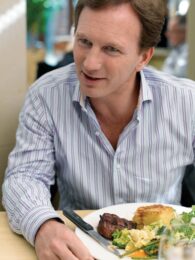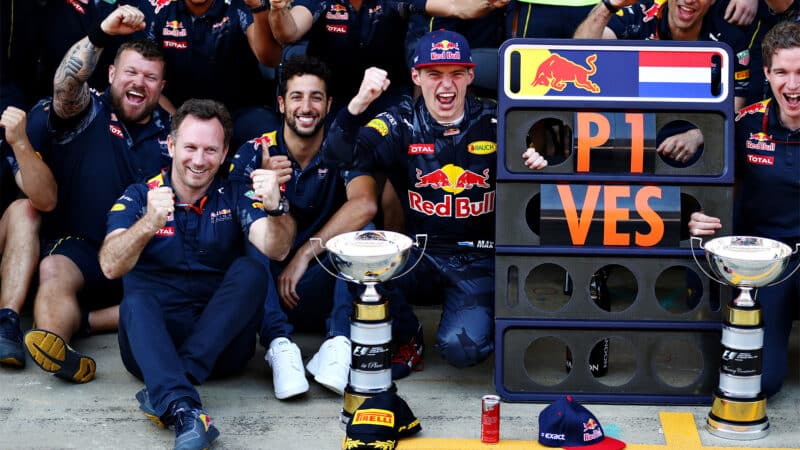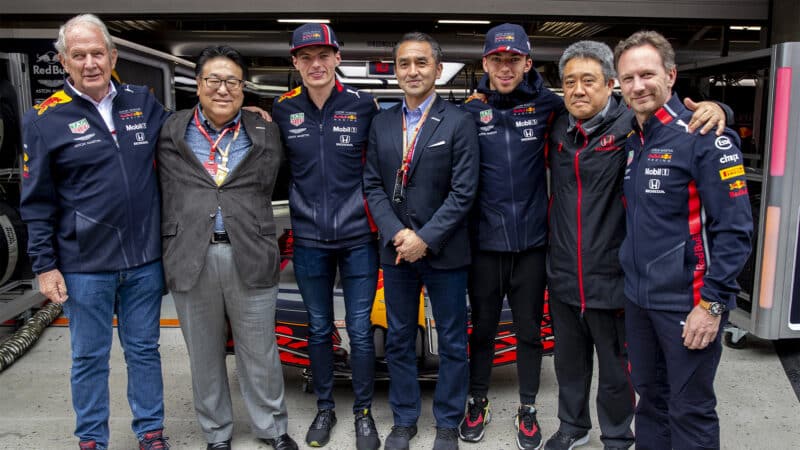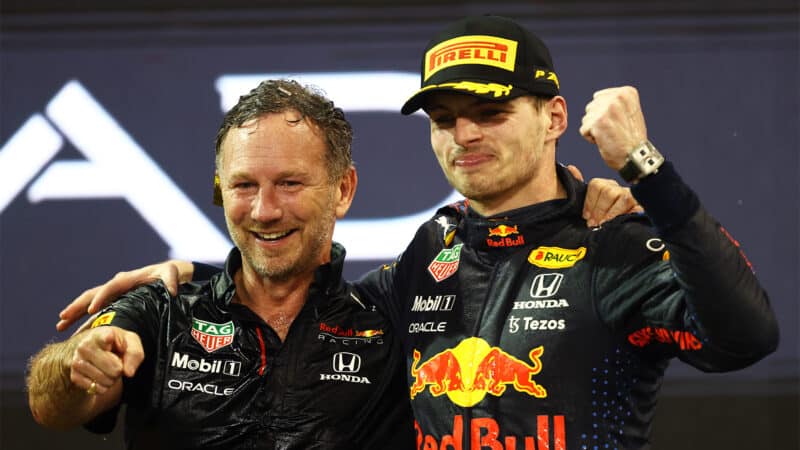“I sold everything I had,” Horner recalls. “I borrowed as much as I could from the bank, from my father – who helped me on condition that I paid him back at some point – and from everywhere else I could think of. That got me a chassis.
“I leased two engines, persuaded Roly Vincini to be my race engineer, and based the car in a shed behind Roly’s house in Norfolk. I called us Arden International. I was team manager, money hunter, secretary, cook and bottle-washer, did all the paperwork and the hassle.”
The name was taken from the area that Horner grew up in. Racing under his own banner was the first taste Horner got for managing a team and 1997 was also the first year in which his future Red Bull connections began to emerge.
“We needed a trailer, and for some reason I decided the best deal was one I found for sale in Austria,” said Horner. “I took a cheap flight to Graz to look at it. The owner, a guy I’d never heard of called Dr Marko, drove a hard bargain, but I said I’d buy it if he delivered it to Calais for me to pick up. When I told my father I’d given the cash to a complete stranger in Austria on a handshake, and I hadn’t even got the trailer yet, he thought I was mad. But Dr Marko’s handshake was good, and the trailer duly turned up at Calais.
“By now I’d found out he was the ex-F1 driver Helmut Marko, and he was running two F3000 cars for Juan Pablo Montoya and Craig Lowndes, so I soon got to know him better.”
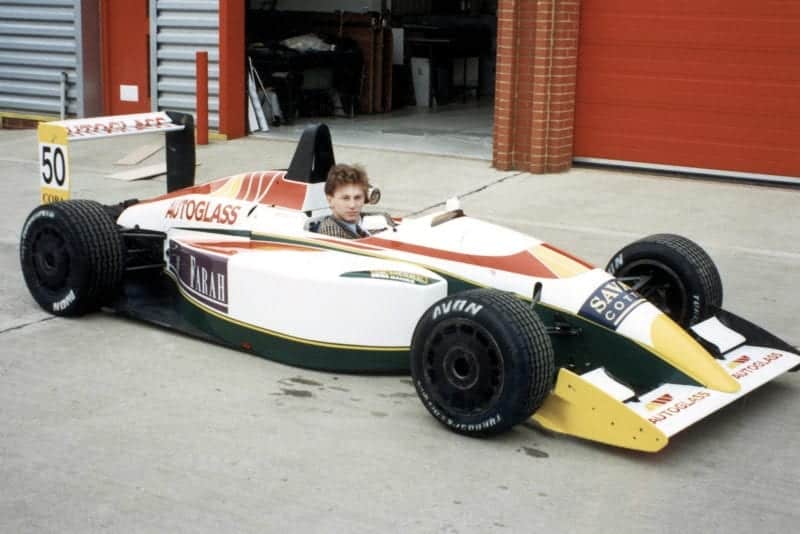
Horner in the final days of his racing career before his management switch
Getty
Horner’s first season in F3000 was hardly impressive. Horner’s shoestring team, without a single spare part to his name, failed to qualify for six of the ten rounds, and raced in the knowledge that a single big shunt could end his tiny start-up outfit. However, he also admits that he was “hardly special”, and one incident, in testing ahead of his second season in 1998 brought that home to him.
“I’d just come out of the pits and Montoya flew past me into Turn 1,” Horner told Motor Sport in 2020. “I remember seeing his outside rear tyre trying to tear itself off the rim, the car at an angle it shouldn’t have been at, Juan totally committed, a guardrail close on the left, with little, if any, run-off.
“I just recall thinking, ‘I can’t do that – and even if I wanted to, I couldn’t.’ I had some kind of self-preservation built in that wouldn’t even allow me to try. I knew there and then that it would be my last season as a driver.”
Horner ended the 1998 season without any points, and a 12th-place finish at Imola as the highlight of the year. “I’d loved all the racing I’d done, but I was honest enough to recognise that I was simply not at the same level as the best guys,” he said.
He now, however, had a team set up in F3000, and had already taken on a second driver in 1998 to help pay the bills. It didn’t require much imagination to think about taking Arden to the next level and, with that, Horner became a full-time team manager for the first time in 1999.
Christian Horner career stats — driver
| Year | Series | Result | Wins | Podiums |
| 1992 | Formula Renault UK Championship | 4th | 1 | 5 |
| 1993 | Formula 3 Britain National Class | 2nd | 5 | 10 |
| 1994 | Formula 3 Britain | 16th | 0 | 0 |
| 1995 | Formula 3 Britain | 16th | 0 | 0 |
| 1996 | British Formula 2 Championship | 5th | 0 | 2 |
| 1997 | FIA Formula 3000 International Championship | 21st | 0 | 0 |
| 1998 | FIA Formula 3000 International Championship | N/A | 0 | 0 |
Christian Horner — Management Career (1999-2023)
Ahead of his first season with Arden now racing outside the cockpit, Horner was still struggling for funding but had managed to scramble enough money together for a two-car team. The budget was made a little larger when a deal was struck with Prodrive and Russian oil company Lukoil, whose owner had a son — Viktor Maslov — who wanted to race in F3000. But after two disaster-filled seasons, Horner bought Prodrive out of the deal and took the team in his own direction.
“To move the team to the next level in 2002 I knew I had to take the risk of moving away from the Lukoil funding, saying goodbye to Viktor, and taking on two really quick drivers,” he said. “The Czech Tomáš Enge was a proven F3000 race winner, and the Swede Björn Wirdheim looked a very promising rookie. Suddenly we were winning – four victories for Tomáš, one for Björn – and after a season-long battle Tomáš beat Sébastien Bourdais to the title by four points. We also won the team title.”
The team record was unfortunately blotted when Enge’s title was taken away due to a failed drug test. But the pace of Wirdheim improved enough to keep Arden International on top and he won the F3000 title in 2003.
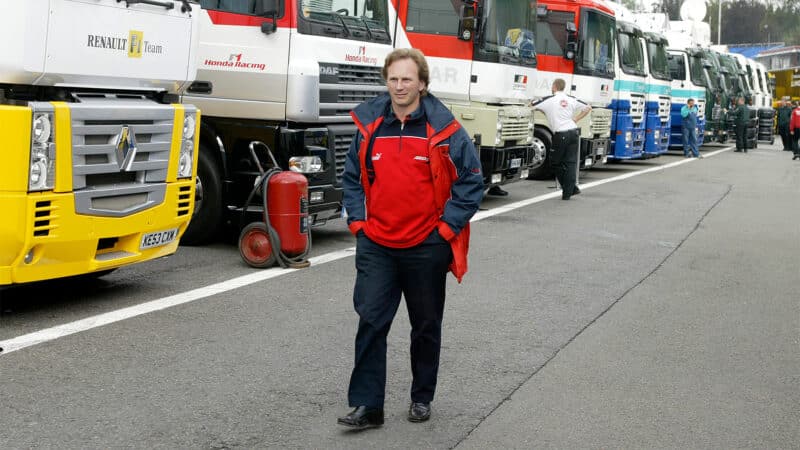
Horner remained as a team principal at Arden until 2004
Grand Prix Photo
“Now Helmut Marko comes back into the story,” said Horner. “He’d sold his team and was running Red Bull Junior. He was looking after Vitantonio Liuzzi, who looked very strong. So I did a deal with Helmut to run him with Red Bull backing in 2004, the final year of F3000 before it was replaced by GP2. Helmut did a really aggressive deal – just like when I’d bought the trailer, seven years before – with a very cheap baseline and good win bonuses. If Liuzzi hadn’t done well Arden would have gone bust, but he won seven of 10 rounds and the championship, plus our Dutch number two Robert Doornbos had a win, and we were team champions again.”
Arden was now the top team in F3000 — which was widely regarded as the last major stepping stone toward F1 — and so naturally, Horner once again set his sights on F1, but this time in search of a management role. Talks with Eddie Jordan over purchasing his F1 outfit stalled and for a time there appeared to be little prospect of an opening elsewhere, but then — almost with Hollywood timing —Dietrich Mateschitz entered the picture.
“I mentioned [my interest] to Helmut, and he said, ‘That’s interesting. Dietrich is thinking about changing Red Bull’s F1 involvement’,” said Horner. “At that point they owned a chunk of Sauber, and were sponsoring Christian Klien at Jaguar. So Helmut set up a meeting in Salzburg and I met Dietrich for the first time.
“It was all very amiable, he gave me plenty of time, and we seemed to get on well. His understanding of F1 was very acute. We had a chat about Jordan, but he said, ‘That doesn’t look interesting for us. We might have an opportunity with Jaguar, we’re looking at that.’
“Then, just before Christmas, Helmut asked me to fly to Salzburg and see Dietrich again. Very quickly he outlined his vision for Red Bull in F1, and he offered me the role of team principal. It was a huge thing for me, that he was prepared to put his faith in me to deliver that vision. Of course I said yes.”
The origins of Red Bull
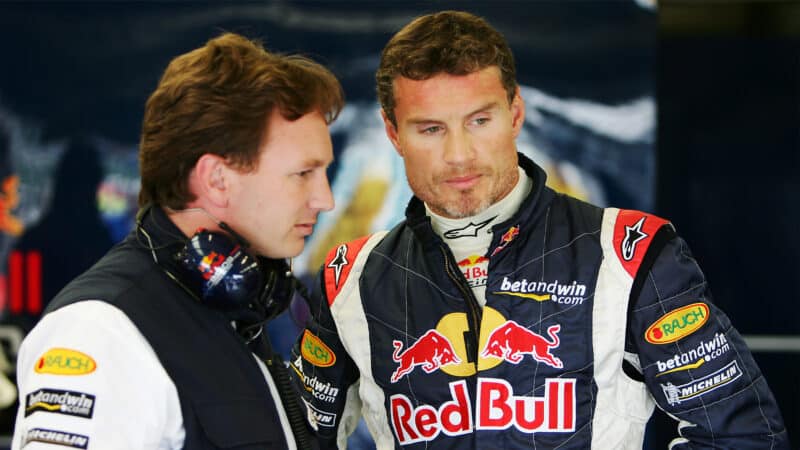
Horner and ‘DC’ made for a powerful combination in Red Bull’s early days
Getty Images
Horner officially became Red Bull’s team principal on January 7, 2005 — just eight weeks before for the first race of the season in Melbourne. His wasn’t the only fresh face at the factory, as David Coulthard had also agreed to join the team from McLaren over the winter break.
“I was absolutely delighted he’d been signed, said Horner. “He was a winner, and he was bringing us 11 seasons of experience with two top teams. I could draw so much out of DC in terms of benchmarking, telling us how things compared with what he’d been used to at McLaren.
“He was already fairly dismayed by what he’d seen at Milton Keynes, but I really wanted to get the best out of him, because when he left McLaren people thought his career was pretty much at an end. He’d been written off. I wanted to regenerate his self-belief.”
The results of Horner’s first year in charge certainly changed the perspectives of many who saw Red Bull as a Mickey Mouse outfit and nothing more, as the team finished an impressive seventh and scored 34 points in total — over three times the haul of Jaguar in its final year (nine points).
Coulthard was responsible for 70% of the points himself, with his best finish coming in his first race at Melbourne where he qualified fifth and finished fourth. Team-mate Christian Klien finished just three places behind him.
But arguably the biggest accomplishment of Horner’s first year in F1 wasn’t even achieved on track, as he managed to lure Adrian Newey — modern F1’s greatest car designer — from McLaren.
Signing Adrian Newey, F1’s greatest designer
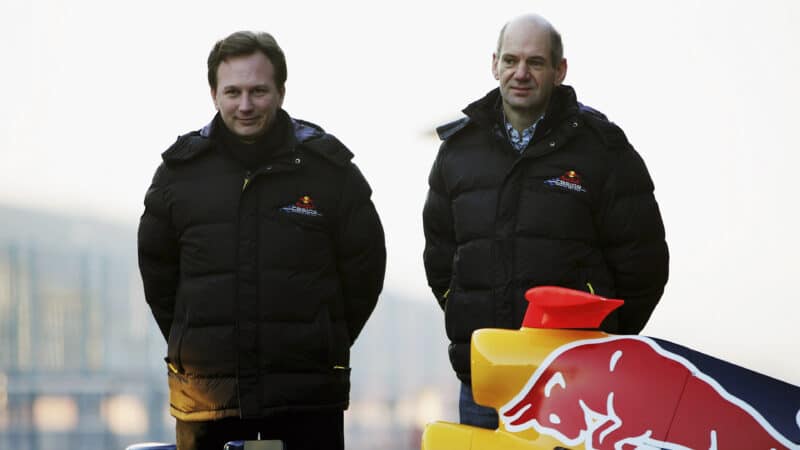
A grinning Horner got his man — Adrian Newey signs with Red Bull ahead of 2006 season
Getty Images
“At Monaco we had the Energy Station floating on the harbour, we had a Star Wars thing going, and Adrian was inquisitive,” said Horner. “So he came on board to see what we were doing. I confided to David, who of course had worked most of his time at McLaren with Adrian and knew him very well, that I’d like to have a crack at getting him to join us.
“David said, ‘Here are his phone numbers. Let’s see if we can sort out dinner.’ So in July David and I had dinner with Adrian and his wife at the Bluebird in the King’s Road. David exuded enthusiasm about Red Bull and the team, but we didn’t talk about the prospect of Adrian joining, we just had an enjoyable, relaxed evening, and he and I really hit it off. I could sense that he was frustrated at McLaren. They hadn’t treated him particularly well, and it didn’t seem like there was any magic between him and Ron. And his contract was about to expire.
